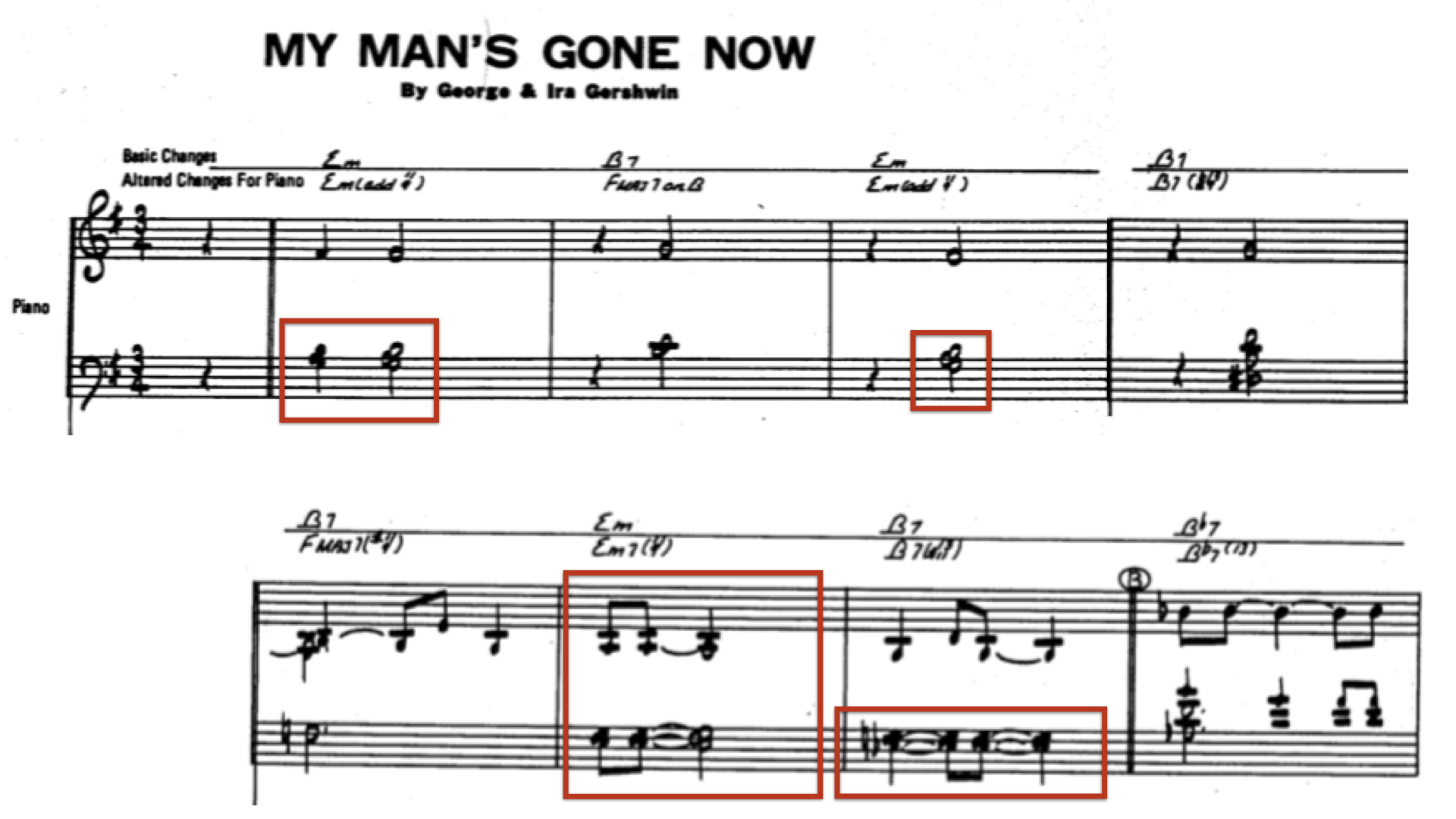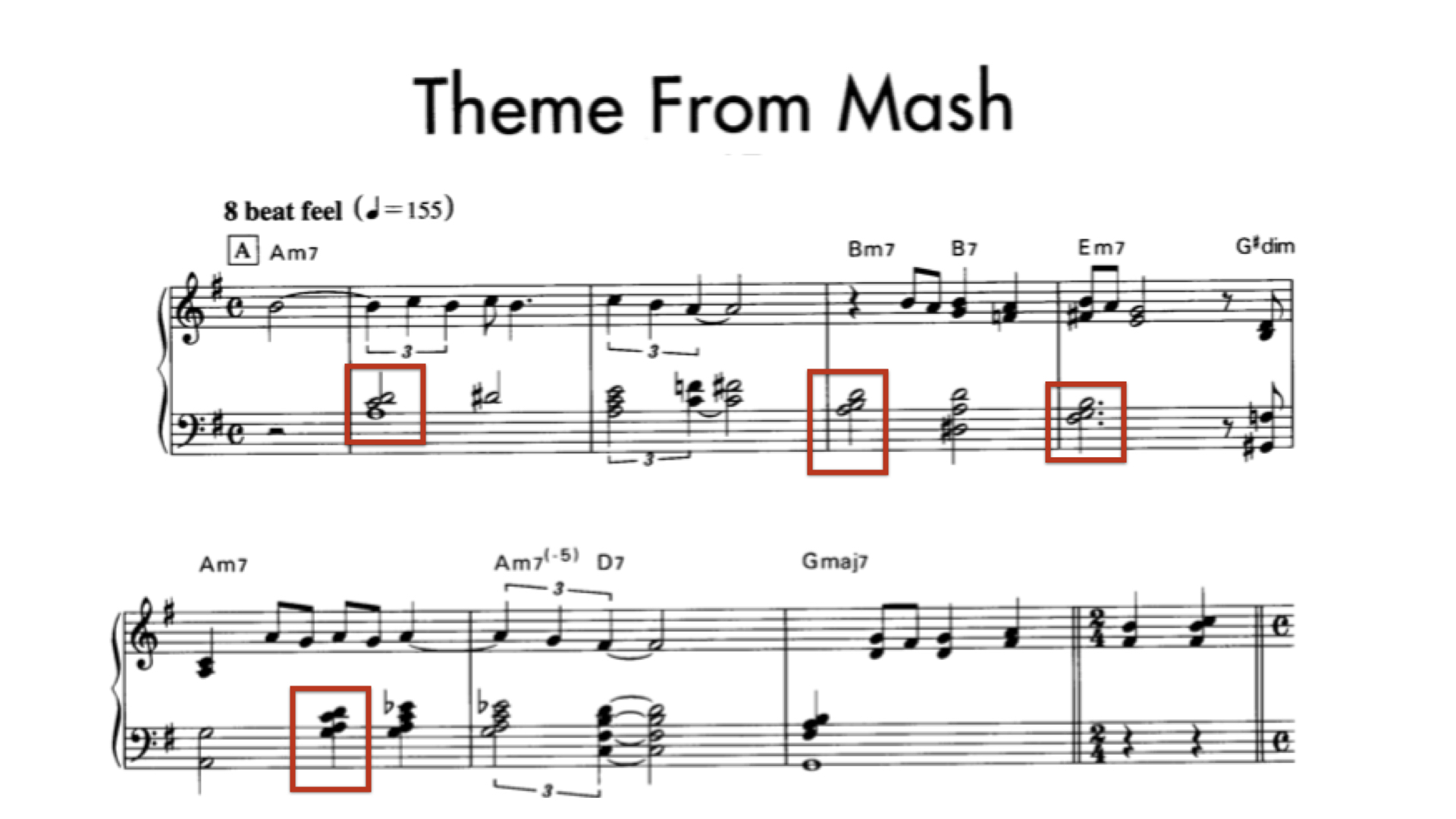Tone Clusters
A technical, formal definition of a tone cluster is a chord that consists of at least 3 adjacent notes in a scale. A less technical definition of a tone cluster is a chord created by mashing your palm on the piano. The key parts of that formal definition are the words ‘in a scale’. The dissonance of the tone cluster you create really depends on the scale you use.
- At one extreme is the chromatic scale, which would create a tone cluster with all notes a semitone apart and so will be quite dissonant – like C C# D D#
- But if you use a diatonic scale, your notes could be a tone apart – like taking C D E from the C Major scale. This is already less dissonant.
- And if you use a Pentatonic scale, your notes could be as far as a minor 3rd apart – like D E G from the C Major Pentatonic Scale. And again, this is considerably less dissonant than the chromatic cluster.
Secundal Harmony
Tone clusters are classified as ‘secundal chords’ – that is chords that are built using intervals of 2nds. Even the Pentatonic cluster above – D E G – is built out of 2nds if we consider the jump from E to G as an Augmented 2nd (so it’s technically a jump from E to Fx).
In Jazz, you will often find:
- Tertian harmony – building chords up in 3rds. For example, we could play CMaj13 as: C E G B D A
- Quartal harmony – building chords up in 4ths. For example, we could play CMaj13 as: B E A D G C
- Secundal harmony – building chords up in 2nds. For example, we could play CMaj13 as: G A B C D E
Even though this secundal harmony is much more dissonant, the same harmonic rules apply as for other chords or chord voicings. You generally want to include the guide tones and exclude the avoid notes/unavailable tensions of each chord.
In Practice
Tone clusters are quite common in Jazz, and you’ll find them in both Early Jazz and Modern Jazz. And there are essentially 2 ways you can use tone clusters:
- Aggressively (as in Free Jazz); and
- Gently (as in a ballad).
First, let’s discuss using tone clusters aggressively. Because tone clusters are so dissonant and jarring they can be used to shock and grab your audiences attention. When used percussively they bridge the gap between notes and noise. Many jazz pianists used tone clusters, including Jelly Roll Morton, Art Tatum, Herbie Nichols, Cecil Taylor, Dave Brubeck, Horace Silver, Duke Ellington, and Thelonious Monk.
But tone clusters also have a gentler side. If played at a soft to medium volume and with a gentle touch, they fit quite well into a Jazz Ballad. This way of playing was popularised by Bill Evans. And a good example if Bill Evan’s version of My Man’s Gone Now on the Sunday at the Village Vanguard album. The first 4 bars use tone clusters followed by a quartal chord. And a bit further on he plays an ii-V (Em7-B7) using tone clusters, again followed by a quartal chord.

And it’s not a coincidence that tone clusters and quartal chords are often mixed together or found side by side. If we take a 3 note quartal chord (B E A) and play it in the first inversion (E A B) we get a tone interval between the top two notes, and thus a chord that begins to sound something like a tone cluster. Both quartal chords and secundal chords give a much more vague and ambiguous sound to the standard tertian harmony we are all used to hearing.
Bill Evans Voicings
When playing chords, Bill Evans was especially fond of using:
- Quartal chords
- Tone clusters
- Fragment/partial chords – these are 3 note chords that have a min2 or Maj2 between the bottom 2 notes and a min3 or Maj3 between the top 2 notes – so like B C E. They are called fragment chords because they usually leave out one of the guide tones so cannot be considered a full chords. He uses these in his version of the Theme from Mash.

Even the Classic Bill Evans Rootless Voicings can be inverted to create something of a cluster chord.
- Rootless G13: F A B E
- Inversion: E F A B
- Fragment: E F A
So, as an example, you could play a ii-V-I in C using tone clusters as follows:
- Dm11: C D E F G
- G7alt: B D♭ E♭ F G
- CMaj13#11: A B D E F#
Some Rules…or Lack Thereof
When playing Tone Clusters aggressively, there are no rules. Literally just mash the keyboard. But when playing tone clusters gently in a ballad, there are a couple of rules you should adhere to:
- Never have a semitone at the top of your voicing as this sounds too dissonant. Use Maj2 or Aug2.
- Play the cluster in the middle register. Too low sounds muddy and too high sounds weak.
And note that due to their incomplete nature, a single cluster can be a number of different chords, so is quite ambiguous. For example, take the notes A B D E. This could be a:
- CMaj13: C E G B D A
- E7sus4: E A B D
- D69: D F# A B E
- Dm69: D F A B E
- Gadd69: G B D E A
- Asus4add9: A D E B
- Db7alt: D♭ F A♭ B D E A
Try using them next time you’re playing a Jazz Ballad…or a Free Jazz song!